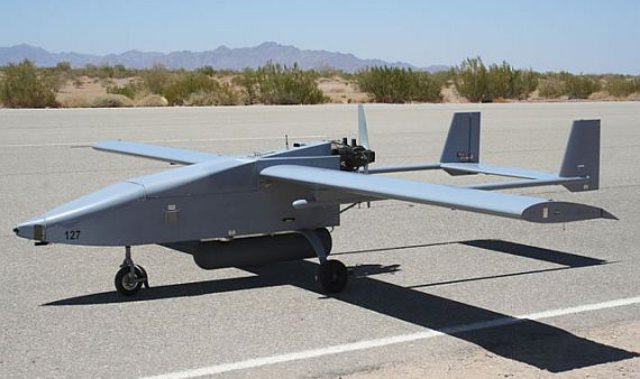Unmanned aircraft system (UAS) designers at Navmar Applied Sciences Corp. in Warminster, Pa., will upgrade their TigerShark medium-sized UAS with electro-optical sensor payload and airframe improvements under terms of a $44.7 million U.S. Navy contract announced late last week.
Officials of the Naval Air Warfare Center Aircraft Division-Lakehurst at Joint Base McGuire-Dix-Lakehurst, N.J., are awarding Navmar at phase-3 Small Business Innovation Research (SBIR) contract for TigerShark improvements.
The Navmar TigerShark UAS for reconnaissance and surveillance missions has a wingspan of 22 feet, weighs 260 pounds, has a payload capacity of 50 pounds, and a flight duration of 10 hours.
The Navy contract calls for Navmar engineers to make improvements to the TigerShark airframe, add improved sensors, and integrate improved command and control systems to current and future TigerShark UAS.
The TigerShark can be fitted with a daylight or infrared camera mounted on a stabilized turret, and can deliver steady, high-quality video during the day and at night. In 2011 Navmar received a contract to integrate a laser radar (LADAR) payload on the TigerShark UAS.
LADAR sensors are notable for their ability essentially to see through camouflage, trees, and urban clutter by producing many different 2-D images from many different angles and collating these 2-D images into one 3-D picture. LADAR produces images of objects through holes and gaps in camouflage, trees, and urban clutter and then can put those images together in a composite picture to reveal what would be hidden in just one 2-D image.
The TigerShark and its smaller sister UAS, the Navmar Mako II UAS, have avionics suites that provide autonomous waypoint navigation and enable operation at ranges of more than 50 miles.
The TigerShark has a VHF command link for manual flight, and UHF modem for autopilot telemetry. The Navmar Mako II UAS has a wingspan of 12 feet, weighs 85 pounds, and can carry a 25-pound sensor payload.
On the current contract Navmar will do the work in Afghanistan; Patuxent River, Md.; and Yuma, Ariz., and should be finished by December.
Source: Military & Aerospace Electronics


Sounds like abuse of the SBIR program – not researching a new technology, just integrating some new stuff on an airplane . . .